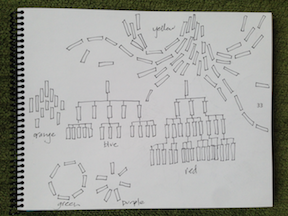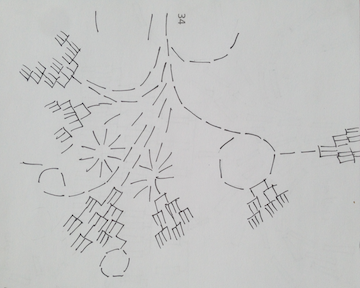Last week, I attended the Canadian Institute of Planners / Alberta Institute of Planners conference in Banff. As I was there, I was noticing that I was very uneasy, itchy. While there, I posted a blog about scratching the itch, recognizing that 800 of us were there to collectively scratch an itch – to find and implement better ways of organizing ourselves and our cities to work better.
This is a universal itch for humanity, to make our world a better place, at any scale. I observed at choice last week about what to do with the itch. Sometimes it is best to ignore the itch and let it go away. Other times, the best thing to do is scratch, inviting the discomfort that comes with learning something new.
At the conference, I chose not to itch. Today I do.
For the last 15 years I have had great difficulty giving my full attention to speakers at conferences. I am often, but now always, physically unable to sit and listen to any length of time. The reason for this is becoming more clear to me.
Over time, I have begun to choose very carefully where I spend my time. At conferences, I choose to go to sessions that call me. I take time to generate the issues that I was tackling with at work. It may have looked to others like I was not paying attention, but I was exploring what was working for me, and not, allowing the words of presenters to pop in and out of my head. It is a wonderful opportunity to generate a plethora of ideas and ways to improve my work. It was time well spent.
As I became older and started to meet more people, the conference also became an opportunity to connect with people. My itch this week was how little opportunity there was to connect with each other. A professional conference is a room full of professionals engaged in parallel play. Each of us is taking in what we find of value for our personal, individual work. We are a collective because we do the same work. We do not have the power of a collective that engages in deepening our work together, learning how to create the social habitats our cities need to reach their full potential.
Planners work out of a passion for our cities. As our last speaker went overtime, allowing no questions from the audience, I was acutely frustrated. And many of the audience rose to their feet in ovation. We celebrated a one-way transaction. No interaction. No feedback. In fact, we celebrated this one-way information delivery.
This stopped me in my tracks.
I see the value in the presenter’s message. I see it was appreciated, for it articulates our shared understanding of city life, and a shared intention to improve city life. And I see that the presentation also, in its delivery, was anti-itch cream. It maintained the status quo of our shared frustration, slowly-paced change. We didn’t scratch.
The maintenance of the status quo takes place because there was no opportunity for the interaction of our minds, hearts and souls as we work to similar purpose – the well-being of our cities. We are able to hide in ourselves because in traditional conference settings there is no, or minimal, opportunity for:
- the audience to ask questions and help the presenter share insight relevant to their work
- the audience and presenter to hear what resonated with the audience
- the audience and presenter to hear what the audience struggled to understand
- the collective to make collective meaning
- the collective to discern, together a collective course of action
Just as our cities need quality feedback, so too does any group of people wishing to take conscious action together. Conscious action does not come from hiding. In fact, as I moderated a session on public engagement strategies, I noticed a further challenge: while together, we do not practice our practice. We spoke about engaging the public in new ways. And we did not engage the audience in new ways. So the audience did not experience something new. They only heard about it.
And here I am writing about it, telling you about what I see, but not giving you the experience of what it could be.
There is value in simply receiving information, and sitting to get it. The value of this diminishes, however, when we do not create opportunities to digest individually and collectively the information that comes our way. I itch for balance. To hear what others have to say, and to figure out what WE think it all means, and what WE and I ought to do about it. What we need is no different than what our cities need. There is a big gap between what we want to do and how we go about learning how to do it. Just as you can’t learn to ride a bicycle hearing about it, we can’t learn to work with communities, stakeholders, citizens and cities hearing about it either. We need to practice what it means to live, work and serve our cities. We need to practice active citizenship, rather than excessive, passive downloads of information.
I love this irony: I figured out the language for this tension as I sat and listened to a plenary speaker at a 2008 planning conference. My body snapped up straight as Bill Sanford said these words: ‘Akrasia – Greek for the gulf between what we know we ought to do and what we actually do.’
Akrasia implies a gap, a space for improvement that compels us to work to make things better. The conventional conference has its time and place to share information, but let’s not mistake it for the development of citizens, or professionals. From time to time, it is the right thing to do, to receive information and hide ourselves. I am wary of when it tucks us away from working for what we want.
What we need more of: stepping into the uncertainty and unease of living in community and dreaming together explicitly about what our cities are and can be for us, and what we need to be for them.

